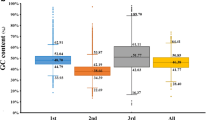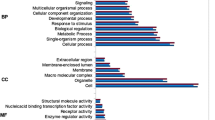Abstract
The CYP8B1 gene is known to catalyse reactions that determine the ratio of primary bile salts and the loss of this gene has recently been linked to lack of cholic acid in the bile of naked-mole rats, elephants and manatees using forward genomics approaches. We screened the CYP8B1 gene sequence of more than 200 species and test for relaxation of selection along each terminal branch. The need for retaining a functional copy of the CYP8B1 gene is established by the presence of a conserved open reading frame across most species screened in this study. Interestingly, the dietary switch from bovid to cetacean species is accompanied by an exceptional ten amino acid extension at the C-terminal end through a single base frame-shift deletion. We also verify that the coding frame disrupting mutations previously reported in the elephant are correct, are shared by extinct Elephantimorpha species and coincide with the dietary switch to herbivory. Relaxation of selection in the CYP8B1 gene of the wombat (Vombatus ursinus) also corresponds to drastic change in diet. In summary, our forward genomics-based screen of bird and mammal species identifies recurrent changes in the selection landscape of the CYP8B1 gene concomitant with a change in dietary lipid content.




Similar content being viewed by others
References
Albalat R, Cañestro C (2016) Evolution by gene loss. Nat Rev Genet 17:379–391
Anderson CL, Strope CL, Moriyama EN (2011) SuiteMSA: visual tools for multiple sequence alignment comparison and molecular sequence simulation. BMC Bioinform 12:184
Bonde Y, Eggertsen G, Rudling M (2016) Mice abundant in muricholic bile acids show resistance to dietary induced steatosis, weight gain, and to impaired glucose metabolism. PLoS ONE 11:e0147772
Bornelöv S, Seroussi E, Yosefi S et al (2017) Correspondence on Lovell et al.: identification of chicken genes previously assumed to be evolutionarily lost. Genome Biol 18:112
Chen Y-H, Zhao H (2019) Evolution of digestive enzymes and dietary diversification in birds. PeerJ 7:e6840
Darriba D, Posada D, Kozlov AM et al (2019) ModelTest-NG: a new and scalable tool for the selection of DNA and protein evolutionary models. bioRxiv. https://doi.org/10.1101/612903
Dunn JG, Foo CK, Belletier NG et al (2013) Ribosome profiling reveals pervasive and regulated stop codon readthrough in drosophila melanogaster. Elife 2:e01179
Edwards HM (1962) Observations on feeding cholic acid to broilers. Poult Sci 41:340–341
Eggert T, Bakonyi D, Hummel W (2014) Enzymatic routes for the synthesis of ursodeoxycholic acid. J Biotechnol 191:11–21
Endo Y, Kamei K-I, Inoue-Murayama M (2018) Genetic signatures of lipid metabolism evolution in Cetacea since the divergence from terrestrial ancestor. J Evol Biol 31:1655–1665
Foote AD, Liu Y, Thomas GWC et al (2015) Convergent evolution of the genomes of marine mammals. Nat Genet 47:272–275
Foote AD, Vijay N, Ávila-Arcos MC et al (2016) Genome-culture coevolution promotes rapid divergence of killer whale ecotypes. Nat Commun 7:11693
Groen JN, Capraro D, Morris KV (2014) The emerging role of pseudogene expressed non-coding RNAs in cellular functions. Int J Biochem Cell Biol 54:350–355
Hagey LR, Møller PR, Hofmann AF, Krasowski MD (2010a) Diversity of bile salts in fish and amphibians: evolution of a complex biochemical pathway. Physiol Biochem Zool 83:308–321
Hagey LR, Vidal N, Hofmann AF, Krasowski MD (2010b) Evolutionary diversity of bile salts in reptiles and mammals, including analysis of ancient human and extinct giant ground sloth coprolites. BMC Evol Biol 10:133
Hahn MW, Demuth JP, Han S-G (2007a) Accelerated rate of gene gain and loss in primates. Genetics 177:1941–1949
Hahn MW, Han MV, Han S-G (2007b) Gene family evolution across 12 drosophila genomes. PLoS Genet 3:e197
Han MV, Thomas GWC, Lugo-Martinez J, Hahn MW (2013) Estimating gene gain and loss rates in the presence of error in genome assembly and annotation using CAFE 3. Mol Biol Evol 30:1987–1997
Hecker N, Sharma V, Hiller M (2017) Transition to an aquatic habitat permitted the repeated loss of the pleiotropic KLK8 gene in mammals. Genome Biol Evol 9:3179–3188
Hiller M, Schaar BT, Indjeian VB et al (2012) A “forward genomics” approach links genotype to phenotype using independent phenotypic losses among related species. Cell Rep 2:817–823
Hofmann AF, Hagey LR, Krasowski MD (2010) Bile salts of vertebrates: structural variation and possible evolutionary significance. J Lipid Res 51:226–246
Hu J, Ng PC (2012) Predicting the effects of frameshifting indels. Genome Biol 13:R9
Hunt BG, Ometto L, Wurm Y et al (2011) Relaxed selection is a precursor to the evolution of phenotypic plasticity. Proc Natl Acad Sci 108:15936–15941
International Chicken Genome Sequencing Consortium (2004) Sequence and comparative analysis of the chicken genome provide unique perspectives on vertebrate evolution. Nature 432:695–716
Johnson BR (2018) Taxonomically restricted genes are fundamental to biology and evolution. Front Genet 9:407
Jungreis I, Lin MF, Spokony R et al (2011) Evidence of abundant stop codon readthrough in drosophila and other metazoa. Genome Res 21:2096–2113
Jungreis I, Chan CS, Waterhouse RM et al (2016) Evolutionary dynamics of abundant stop codon readthrough. Mol Biol Evol 33:3108–3132
Kaur A, Patankar JV, de Haan W et al (2015) Loss of Cyp8b1 improves glucose homeostasis by increasing GLP-1. Diabetes 64:1168–1179
Kosakovsky Pond SL, Frost SDW (2005) Not so different after all: a comparison of methods for detecting amino acid sites under selection. Mol Biol Evol 22:1208–1222
Kosakovsky Pond SL, Murrell B, Fourment M et al (2011) A random effects branch-site model for detecting episodic diversifying selection. Mol Biol Evol 28:3033–3043
Kozlov AM, Darriba D, Flouri T et al (2019) RAxML-NG: a fast, scalable and user-friendly tool for maximum likelihood phylogenetic inference. Bioinformatics. https://doi.org/10.1093/bioinformatics/btz305
Lahti DC, Johnson NA, Ajie BC et al (2009) Relaxed selection in the wild. Trends Ecol Evol 24:487–496
Lassmann T, Sonnhammer ELL (2005) Automatic assessment of alignment quality. Nucleic Acids Res 33:7120–7128
Lee YCG, Reinhardt JA (2012) Widespread polymorphism in the positions of stop codons in Drosophila melanogaster. Genome Biol Evol 4:533–549
Loughran G, Chou M-Y, Ivanov IP et al (2014) Evidence of efficient stop codon readthrough in four mammalian genes. Nucleic Acids Res 42:8928–8938
MacArthur DG, Tyler-Smith C (2010) Loss-of-function variants in the genomes of healthy humans. Hum Mol Genet 19:R125–R130
MacArthur DG, Balasubramanian S, Frankish A et al (2012) A systematic survey of loss-of-function variants in human protein-coding genes. Science 335:823–828
Meredith RW, Zhang G, Gilbert MTP et al (2014) Evidence for a single loss of mineralized teeth in the common avian ancestor. Science 346:1254390
Mugal CF, Wolf JBW, Kaj I (2014) Why time matters: codon evolution and the temporal dynamics of dN/dS. Mol Biol Evol 31:212–231
Murrell B, Wertheim JO, Moola S et al (2012) Detecting individual sites subject to episodic diversifying selection. PLoS Genet 8:e1002764
Murrell B, Moola S, Mabona A et al (2013) FUBAR: a fast, unconstrained bayesian AppRoximation for inferring selection. Mol Biol Evol 30:1196–1205
Murrell B, Weaver S, Smith MD et al (2015) Gene-wide identification of episodic selection. Mol Biol Evol 32:1365–1371
Pagel KA, Pejaver V, Lin GN et al (2017) When loss-of-function is loss of function: assessing mutational signatures and impact of loss-of-function genetic variants. Bioinformatics 33:i389–i398
Pond SLK, Frost SDW, Muse SV (2005) HyPhy: hypothesis testing using phylogenies. Bioinformatics 21:676–679
Potapova NA, Andrianova MA, Bazykin GA, Kondrashov AS (2018) Are nonsense alleles of Drosophila melanogaster genes under any selection? Genome Biol Evol 10:1012–1018
Rinker DC, Specian NK, Zhao S, Gibbons JG (2019) Polar bear evolution is marked by rapid changes in gene copy number in response to dietary shift. Proc Natl Acad Sci USA 116:13446–13451
Saarinen J, Lister AM (2016) Dental mesowear reflects local vegetation and niche separation in Pleistocene proboscideans from Britain. J Quat Sci 31:799–808
Sela I, Ashkenazy H, Katoh K, Pupko T (2015) GUIDANCE2: accurate detection of unreliable alignment regions accounting for the uncertainty of multiple parameters. Nucleic Acids Res 43:W7–W14
Sharma V, Hiller M (2018) Loss of enzymes in the bile acid synthesis pathway explains differences in bile composition among mammals. Genome Biol Evol 10:3211–3217
Sharma V, Elghafari A, Hiller M (2016) Coding exon-structure aware realigner (CESAR) utilizes genome alignments for accurate comparative gene annotation. Nucleic Acids Res 44:e103
Sharma V, Schwede P, Hiller M (2017) CESAR 2.0 substantially improves speed and accuracy of comparative gene annotation. Bioinformatics 33:3985–3987
Sharma V, Hecker N, Roscito JG et al (2018) A genomics approach reveals insights into the importance of gene losses for mammalian adaptations. Nat Commun 9:1215
Sherman RM, Forman J, Antonescu V et al (2019) Assembly of a pan-genome from deep sequencing of 910 humans of African descent. Nat Genet 51:30–35
Smith MD, Wertheim JO, Weaver S et al (2015) Less is more: an adaptive branch-site random effects model for efficient detection of episodic diversifying selection. Mol Biol Evol 32:1342–1353
Sulem P, Helgason H, Oddson A et al (2015) Identification of a large set of rare complete human knockouts. Nat Genet 47:448–452
Tonin F, Arends IWCE (2018) Latest development in the synthesis of ursodeoxycholic acid (UDCA): a critical review. Beilstein J Org Chem 14:470–483
Vijay N, Park C, Oh J et al (2018) Population genomic analysis reveals contrasting demographic changes of two closely related dolphin species in the last glacial. Mol Biol Evol 35:2026–2033
Wagh K, Bhatia A, Alexe G et al (2012) Lactase persistence and lipid pathway selection in the Maasai. PLoS ONE 7:e44751
Wang Z, Xu S, Du K et al (2016) Evolution of digestive enzymes and RNASE1 provides insights into dietary switch of cetaceans. Mol Biol Evol 33:3144–3157
Warren WC, Hillier LW, Tomlinson C et al (2017) A new chicken genome assembly provides insight into avian genome structure. G3(7):109–117
Wertheim JO, Murrell B, Smith MD et al (2015) RELAX: detecting relaxed selection in a phylogenetic framework. Mol Biol Evol 32:820–832
**a X (2013) DAMBE5: a comprehensive software package for data analysis in molecular biology and evolution. Mol Biol Evol 30:1720–1728
**a X, **e Z, Salemi M et al (2003) An index of substitution saturation and its application. Mol Phylogenet Evol 26:1–7
Acknowledgements
NV would like to acknowledge funding from IISER Bhopal under Grant # INST/BIO/2017/019. We thank Council of Scientific & Industrial Research for fellowship to SSS, Ministry of Human Resource Development for fellowships to LT and SS. NV has been awarded the Innovative Young Biotechnologist Award 2018 from the Department of Biotechnology and Early Career Research Award from the Department of Science and Technology (both Government of India).
Author information
Authors and Affiliations
Corresponding author
Additional information
Handling Editor: William Murphy.
Electronic supplementary material
Below is the link to the electronic supplementary material.
Rights and permissions
About this article
Cite this article
Shinde, S.S., Teekas, L., Sharma, S. et al. Signatures of Relaxed Selection in the CYP8B1 Gene of Birds and Mammals. J Mol Evol 87, 209–220 (2019). https://doi.org/10.1007/s00239-019-09903-6
Received:
Accepted:
Published:
Issue Date:
DOI: https://doi.org/10.1007/s00239-019-09903-6




